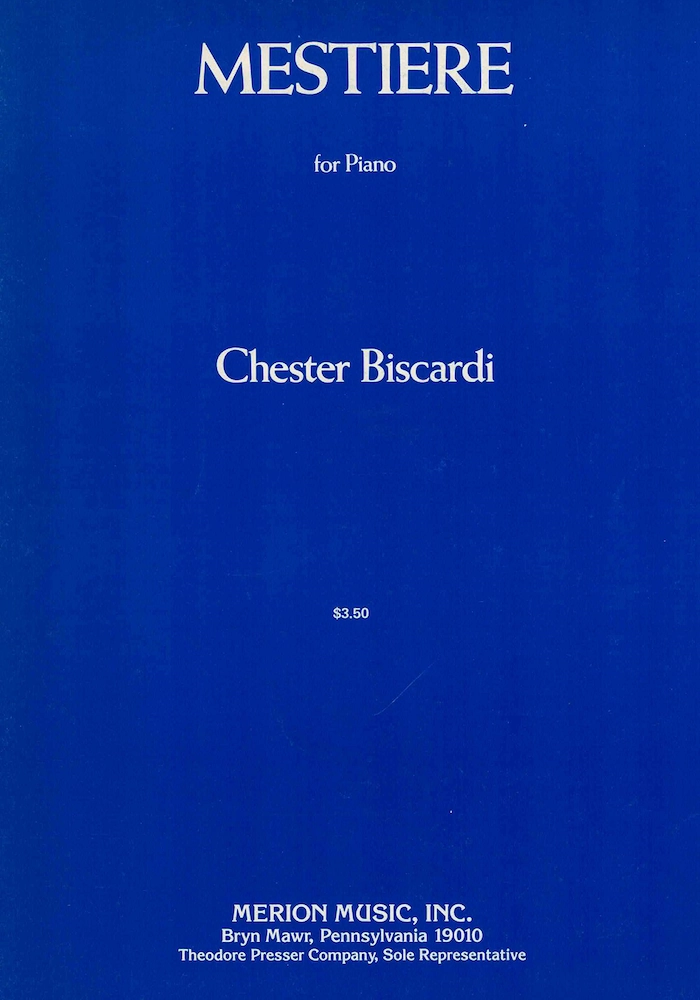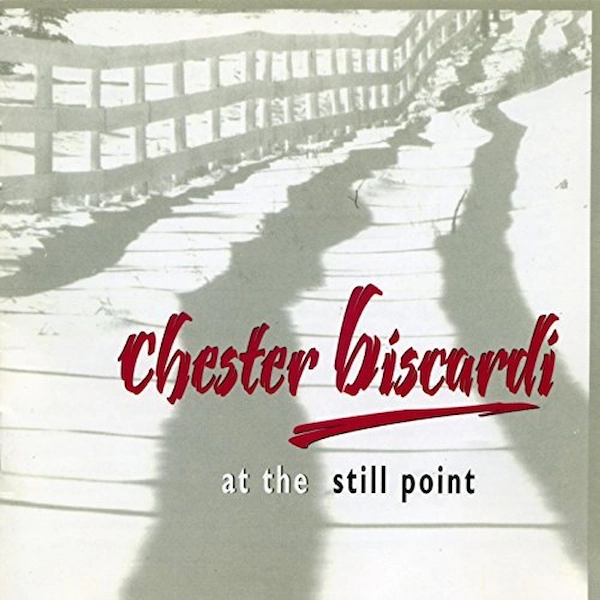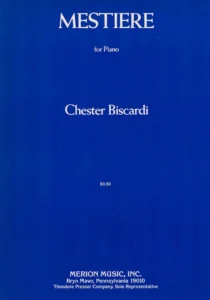Program Notes
Mestiere, for piano (1979), was commissioned by Tulane University for the 1979 Festival of Piano Music in New Orleans and is dedicated to Robert Weirich. The Festival created a context for it: my work would come on the first half of the program between Muzio Clementi’s Piano Sonata, Op. 36, No. 3, in C Major (1797) and Alexander Scriabin’s Piano Sonata No. 5, Op. 53, in F# Major (1907), followed by an alternating mix of etudes by Chopin and Debussy on the second half. Mestiere is a celebration of the contrasting sonorities – incisive and lyrical – that are natural to the piano. The Italian title can be translated as “craft, business, occupation – whatever is necessary to one’s profession or art”. By extension “Mestiere” is what one is and does, what is integral to one’s life and work. The title comes from Cesare Pavese’s collected journals, Il mestiere di vivere (1935-1950) (The Business of Living).
From the celebratory opening to the quiet, still ending, I play with sudden changes, expansions, and contractions of sounds. Dynamics and pedaling (all three are used) are gradated and subtle. I create areas of “frozen registration” from which I try to break free – a tone remains in a certain place until intuitively I feel that it must move. The freely, fast flowing music in Elliott Carter’s Piano Sonata (1945-46) resonates in this work, and there are hints of a three-note gesture and a chord from Toru Takemitsu’s Piano Distance (1961) where the music is the direct and natural result of sounds themselves. There is a direct quotation from the third movement, “Farben“, Mässig (“Summer Morning by a Lake: Chord-Colors”, Moderate), from Arnold Schoenberg’s Five Pieces for Orchestra, Op. 16 (1909). I also adapted material from my earlier works, including they had ceased to talk (1975), Trusting Lightness (1975), and Eurydice (1978).

Mestiere may be performed together with Di Vivere, for clarinet in A and piano with flute, violin and violoncello (1981), which shares the same inspiration from Pavese’s journals. Di Vivere may be performed as a quintet or a duet for clarinet in A and piano.
The quintet, the duet or the piano solo may be performed individually or in one of the following combinations:
I. Di Vivere duet and quintet
II. Mestiere and Di Vivere duet and quintet
III. Mestiere and Di Vivere quintet
IV. Mestiere and Di Vivere duet
Juxtaposed Landscapes
Juxtaposed Landscapes: An American Composer Journeys into Japan
Convocation Address, Sarah Lawrence College: September 18, 1990








